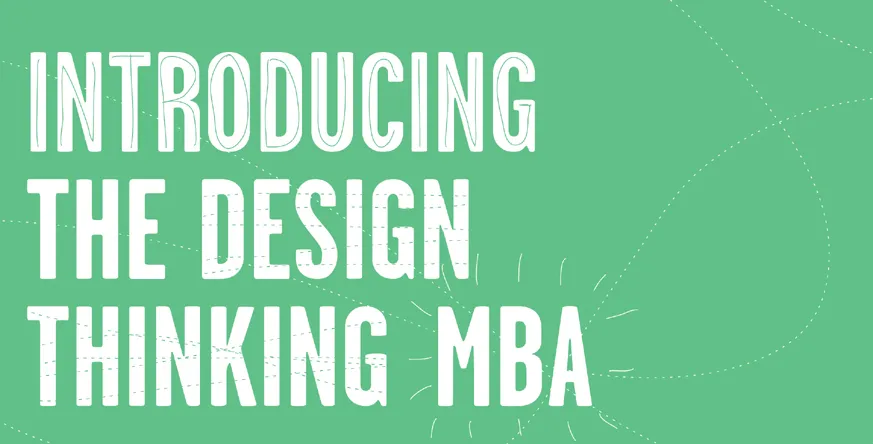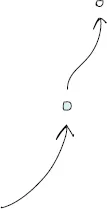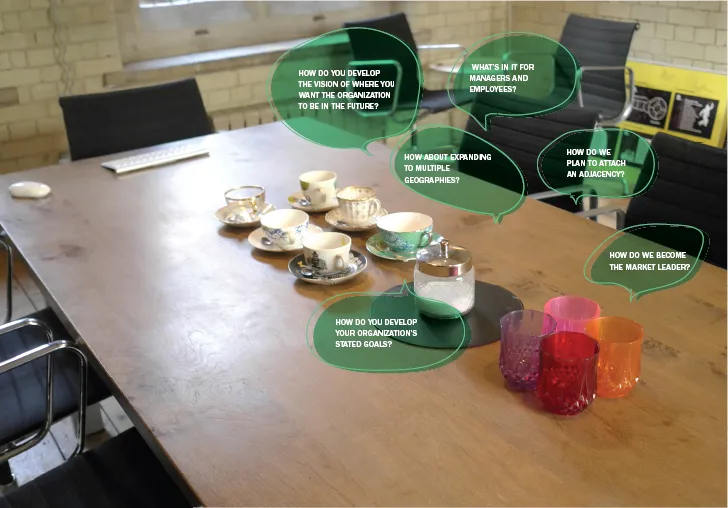![]()
Previous Chapter | Next Chapter | Table of Contents
![]()
Discontinuity is causing chaos. It’s now the norm. Traditional hierarchies will not survive long. The next generation of leaders need to know how to roll with change. They also have to mobilize people who are resistant to change or don’t know how to successfully adapt to an ever-evolving business environment. In this chapter we explore strategic business challenges familiar to most organizations and demonstrate how design thinking approaches can be applied to those challenges. Complex business problems today demand new leaders to manage change effectively, reinvent business models and practices rapidly enough to keep up with the competition, and outinnovate them while balancing the management of change with rapid growth. The adaptability of any organization depends on the effective handling of other key strategic challenges: developing adaptable strategies, avoiding commoditization, creating sustaining differentiation, developing innovative culture, engaging customers and employees, responding to technological disruptions, and balancing short- and long-term strategies. For each of these business problems we apply a design thinking lens to raise new questions and shape creative ideas. Each subsection is complemented with an activity. The basic illustrative design thinking implementations serve as useful examples of how to approach business problems with empathy, creativity, foresight, and consumer-centricity. They are intended to inspire new pathways that address even the oldest and most wicked challenges. On the following pages is the list of design thinking solutions that are matched to specific business challenges.
Linking Design Thinking Solutions to Business Challenges
| Business Challenges | Design Thinking Solutions |
| Growth | Storytelling |
| Predictability | Strategic Foresight |
| Change | Sensing |
| Relevance | Value Redefinition |
| Extreme Competition | Experience Design |
| Standardization | Humanization |
| Creative Culture | Prototyping |
| Strategy and Organization | Business Model Design |
Business Challenge 01: Growth
Growth is at the forefront of every business leader’s mind. Most tend to utilize classic growth strategies to get there: new strategic partnerships, horizontal market expansion, vertical integration, product extension, and franchising. Although all these strategies are well known, how does an organization come to select one over the other as a means for growth? Once decided, how does a company focus its resources? And what are the implications for organizational design?
The process of redefining the boundaries of business and making explicit decisions regarding who it will and will not serve often sparks intense debates around any growth strategy. There are no simple black and white answers to these questions, but design thinking can be used to bring clarity and align its business model to achieve maximum leverage.
Philip Crosby, author of The Eternally Successful Organization, says growth is unavoidable “if for no other reason than to accommodate the increased expenses that develop over the years. Inflation also raises the cost of everything, and retaliatory price increases are not always possible. Salaries rise as employees gain seniority. The cost of benefits rises because of their very structure, and it is difficult to take any back, particularly if the enterprise is profitable. Therefore cost eliminations and profit improvement must be conducted on a continuing basis, and the revenues of the organization must continue to increase in order to broaden the base.”
Most organizations, however, aspire to grow in order to prosper, not just survive. Growth means different things to different organizations. There are many dimensions a company can select to measure its growth. Although the ultimate goal of most companies is profit, other financial data may be used as indications of growth. Some business leaders use revenue, EBITDA (earnings before interest, taxes, depreciation, and amortization), product line expansion, employees, or other criteria to evaluate organizational growth.
Growth is also the very essence of entrepreneurship, including corporate entrepreneurship. High growth leads to managerial complexity, so the alignment between shareholders, executive leadership, managers, and employees can quickly become choking points. Growth comes with the questions where a company’s leadership, culture, systems, management, and business model can hold itself together.
Growth largely depends on increased economic activity, which requires certain preconditions, including consumer confidence and demographic shifts. The 1980s and 1990s were an unprecedented period of economic expansion in the United States as the country was driven by increasing demand for cars, housing, home appliances, and other products. The debt-fueled growth of consumer spending was boosting the gross domestic product (GDP) and creating millions of jobs while corporations were building their production capacity and pushing up their corporate profits. Growth was easy under those circumstances, and business gurus were busy selling any number of “proven” formulas to get it.
These management best practices developed during the boom period between the 1980s and 1990s were widely codified and taught in business schools around the world. They were liberally applied to industry after industry by managers trained in whatever best practice. Today, the danger lies in applying theories and practices based on those outdated models of two or three decades ago. Consider current macroeconomic trends and industry dynamics—growth is a lot harder to come by because we are operating in a very different, much more complex world. And if you’re thinking about relying on emerging markets such as China, Mexico, Brazil, and India, be warned that you are entering a very different game with very different rules.
Growth can’t continue unchallenged forever; our Earth’s resources are finite. Sustainable growth is still a myth: It’s quite impossible to decouple economic progress from environmental damage. With all of that, we are looking at a no-growth future. Unless we can reimagine and reinvent new industries, we simply cannot rely on economic growth to power our growth plan.
Growth is also the very essence of entrepreneurship, including corporate entrepreneurship.
Growth Needs a Strategy, and Every Strategy Needs a Story
Most businesses develop specific plans that, over time, will move their business to a level that meets the goals of the executive team, the shareholders, and the investment community. The reason why growth strategies are so vital is they keep things moving. And in business, if you’re not going forward, you’re going backward.
Growth means creating a clear and compelling vision of the future. Your vision needs to be very clear in terms of what you want from your business. How do we plan to attach an adjacency? How do we become the market leader? How about expanding to multiple geographies? And what’s in it for managers and employees? Ultimately, the most meaningful yardstick is one that shows progress with respect to an organization’s stated goals, whatever they are. So how do you develop your organization’s stated goals? How do you develop the vision of where you want the organization to be in the future?
Design Thinking Approach 01: Storytelling
People who most successfully practice design thinking are curious, imaginative, and filled with wonder. In short, they are people who love stories and people who love to tell stories.
Stories reveal the hopes, dreams, and aspirations of authors, readers, populations, and cultures. They can also reveal the hopes, dreams, and aspirations of large organizations. The story of a company is what truly determines its purpose and value. The right story will always be more substantial than the right strategy because strategies are susceptible to the ingenuity of competitors, disruptive industry shifts, and bad luck while stories are impervious. If you write it, you own it.
Every time a large-scale change effort fails, it’s because management fail to connect with mid-level executives and employees in a meaningful way. They circulate memos or PowerPoints. They produce corporate communication booklets. They dust off the pom-poms for the next corporate off-site meeting. Or they throw up a lot of dry data and factual logic that some audience members receive with their dukes up. In short, they fail to tell a good story.
Good storytelling is a technique where a leader is tasked with reframing an organization’s past, present, future, problems, needs, desires, and hopes using a narrative built on salient metaphors to help people understand and connect with the company, its values, and its purpose. In a world when being strategic means being logical and fact-based, where do stories belong? They add an emotional dimension to business logic.
“If history were taught in the form of stories, it would never be forgotten.”
—Rudyard Kipling
They foster empathy and connectedness. They ...





